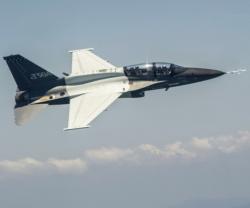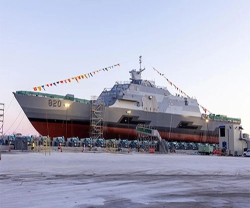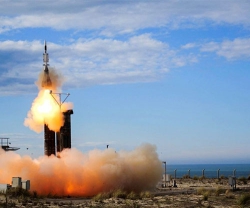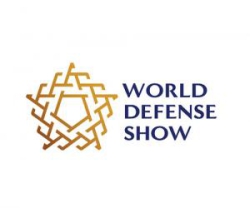Indra to Supply 2 LANZA 3D Deployable Radars to NATO
14.07.2015 Europe
Indra will supply two Lanza 3D long-range deployable air defense radars (LTR-25) to NATO Communications and Information Agency (NCI Agency). The amount of this contract, with an execution period of 38 months, stands at €22 million, and includes options for a third radar and some optional equipment, which could rise the price up to €36 million.
The contract was signed on 10 July at the NCI Agency Headquarters in Brussels by the Agency General Manager, Koen Gijsbers, and Indra’s General Manager Carlos Suárez.
The Deployable Air Defense Radars (DADR) will be part of NATO's Air Command and Control System (ACCS), one of the pillars of the NATO’s Integrated Air and Missile Defense System (NATINAMDS) capability, which for the first time will unify management of all air operations, including planning and mission execution support.
LTR-25 radars will be fully integrated in NATO's Air Command and Control System, supplementing the existing static installations, reinforcing surveillance in areas of special interest and providing greater capability for deploying international missions. They also will offer the capability to detect and monitor ballistic missiles.
Each LTR-25 unit is composed of a primary radar integrated with a secondary radar and an operation and power generation shelter. The system has been designed to facilitate transportability and deployment in non-prepared sites: the full system could be accommodated either into one single Hércules C130-type aircraft or in two trucks.
The development of the deployable version of the Lanza 3D long range radar started in 2012 as part of a Pre-commercial Procurement Program of the Spanish Ministry of Defense with the support of CDTI (Industrial Technology Development Centre). LTR-25 is the fifth generation of L-band Lanza radar family and represents a technological evolution that places it among the most advanced of its class, including Digital Beam forming, Direct Radio Frequency sampling, Monopulse Technique in Elevation & Azimuth, Anti-clutter Capabilities, state of the art signal processing, Ballistic Missile detection and tracking and an innovative design that reduces maintenance costs.
The company's Lanza 3D radars operates on the five continents. Indra has currently an order backlog of more than 20 units of the different radar models of the family (long-range, mobile in two versions and naval), placing Indra as the worldwide reference in this segment.
The Deployable Air Defense Radars contract consolidates Indra's technological leadership in this field. Within NATO scope, the company has been awarded for the supply of long-range radars in the latest tenders launched by the Alliance Host Nations.
The contract was signed on 10 July at the NCI Agency Headquarters in Brussels by the Agency General Manager, Koen Gijsbers, and Indra’s General Manager Carlos Suárez.
The Deployable Air Defense Radars (DADR) will be part of NATO's Air Command and Control System (ACCS), one of the pillars of the NATO’s Integrated Air and Missile Defense System (NATINAMDS) capability, which for the first time will unify management of all air operations, including planning and mission execution support.
LTR-25 radars will be fully integrated in NATO's Air Command and Control System, supplementing the existing static installations, reinforcing surveillance in areas of special interest and providing greater capability for deploying international missions. They also will offer the capability to detect and monitor ballistic missiles.
Each LTR-25 unit is composed of a primary radar integrated with a secondary radar and an operation and power generation shelter. The system has been designed to facilitate transportability and deployment in non-prepared sites: the full system could be accommodated either into one single Hércules C130-type aircraft or in two trucks.
The development of the deployable version of the Lanza 3D long range radar started in 2012 as part of a Pre-commercial Procurement Program of the Spanish Ministry of Defense with the support of CDTI (Industrial Technology Development Centre). LTR-25 is the fifth generation of L-band Lanza radar family and represents a technological evolution that places it among the most advanced of its class, including Digital Beam forming, Direct Radio Frequency sampling, Monopulse Technique in Elevation & Azimuth, Anti-clutter Capabilities, state of the art signal processing, Ballistic Missile detection and tracking and an innovative design that reduces maintenance costs.
The company's Lanza 3D radars operates on the five continents. Indra has currently an order backlog of more than 20 units of the different radar models of the family (long-range, mobile in two versions and naval), placing Indra as the worldwide reference in this segment.
The Deployable Air Defense Radars contract consolidates Indra's technological leadership in this field. Within NATO scope, the company has been awarded for the supply of long-range radars in the latest tenders launched by the Alliance Host Nations.
Latest news
Latest events
Doha International Maritime Defence Exhibition & Conference (DIMDEX 2026)
19 - 22 Jan 2026Doha - QatarUMEX – SimTEX
20 - 22 Jan 2026ADNEC Centre Abu Dhabi, - United Arab EmiratesWorld Defense Show (WDS) 2026
08 - 12 Feb 2026Riyadh - Saudi ArabiaSAHA EXPO International Defence & Aerospace Exhibition
05 - 09 May 2026İstanbul Expo Center - Turkey






















